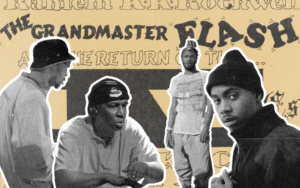Last month, students at the University of Southern California* got an inside look at what it really takes to break into sound design and music production.
Splice’s Dylan Wood and John Kunkel led the session, offering a masterclass in how creativity, technical skill, and smart workflows come together in today’s music industry.
At the heart of the discussion was one key takeaway: Authenticity and efficiency don’t compete. Rather, they complement each other.
*USC has no affiliation with Splice and is not endorsing any Splice services or products.
Finding your sound: An intentional approach
Dylan, a sound designer and engineer, kicked off the session by sharing his journey in sample creation. He emphasized that whether you’re working with vintage gear or a simple mic setup, the key to a great sound lies in intention. His process for creating a popular vintage drum pack wasn’t just about expensive equipment; it was about meticulous mic placement, a deep knowledge of recording history, and a disciplined process of culling until only the most unique and usable sounds remained.
“When we’re making sample packs, the biggest thing is intentionality,” he says. “I want my sounds to be the absolute best they can be, with no filler at all.”
This focus on authenticity is a powerful lesson for every creator. The goal isn’t to emulate a sound but to find and refine your own. As Dylan put it, a musician’s most valuable tool isn’t their gear; it’s their ear, and the discipline to create sounds with purpose.
Mastering your workflow: A professional’s toolkit
John, a veteran producer and Splice team member, then showed how that creative intention can be amplified by an efficient workflow. He demonstrated how he uses tools like Create and personal templates to quickly move from an initial idea to a full track arrangement. He stressed that in today’s fast-paced industry, a producer’s time is their most valuable asset.
This approach isn’t “cheating;” it’s a way to harness technology to get past creative blocks and focus on the big picture of a song. John’s insights resonated deeply—particularly his message that top producers don’t spend hours tweaking a four-bar loop. Instead, they use a streamlined process to build a full song and then perfect the details later.
John’s session also revealed that creating samples can be a viable career path. A successful pack creator can earn a substantial living, providing a solid stream of passive income—a welcome stability in an often unpredictable industry.
The modern creator: A fusion of skills
Ultimately, the session showed that today’s music maker is a unique fusion of roles: a creative artist, a technical sound designer, and a strategic entrepreneur. The ability to create a distinctive sound (like Dylan), and then build an efficient workflow to execute on that vision (like John) is the true key to success.
For a student, this is a blueprint for a career. For an educator, this is a blueprint for a curriculum. It shows that the most important tool is a creator’s own vision, which Splice can help you amplify in the classroom and beyond.
Ready to bring these ideas to your classroom?
- For educators: Explore our educational resources, including free lesson ideas and our Magic Link program to get your students started.
- For students: Find your next sound and kickstart your creative career with a student discount.
October 24, 2025



